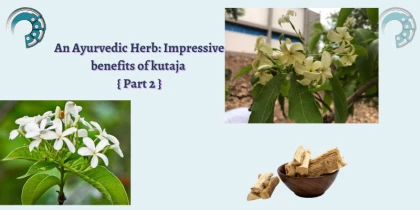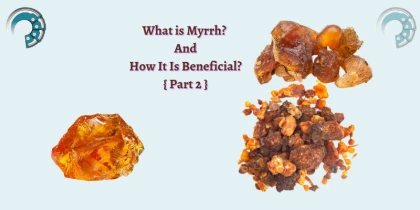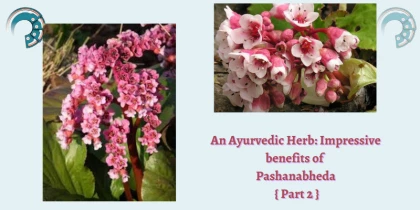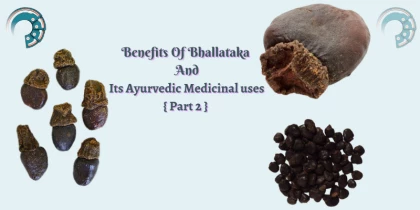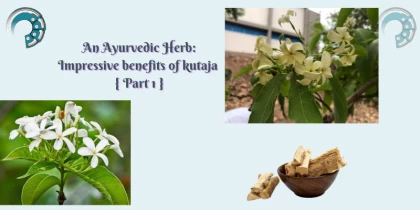
An Ayurvedic Herb : Impressive benefits of Agrimony { Part 1 }
Agrimony :

Agrimony is a lovely herb with spikes bearing rows of small yellow blooms, which are known as church steeples. Antioxidant, antibacterial, and anti-inflammatory qualities are all present in the blooms. The plant Agrimony is used to cure rashes on the skin, stomach disturbances, sore throats, and rheumatism. Agrimony is the most effective herbal medicine for moderate diarrhoea, slow digestion, poor circulation, and hemorrhoids, with no negative side effects. Rosaceae Agrimonia eupatoria Church steeples are sometimes known as Cockleburrs. Gargling with an agrimony infusion can help with sore throats, and washing with it can help with mouth ulcers. By stimulating the stomach and gallbladder, drinking agrimony infusions aids digestion. It can also help with irritable bowel syndrome. Agrimony was traditionally used to treat gunshot wounds, and it aids in blood clotting. Agrimony has long been thought to have magical properties, and one of its oldest names was a fairy’s wand. Agrimony was suggested as a witch’s remedy for those who were “elf-shot” or suffering from inexplicable disease during a Scottish witch trial in the 18th century.
Other names of Agrimony/ Church steeples are :
 Agrimone, Agrimonia, Agrimonia eupatoria, Aigremoine, Aigremoine Eupatoire, Church Steeples, Churchsteeples, Cockeburr, Cocklebur, Common Agrimony, Da Hua Long Ya Cao, Eupatoire-des-Anciens, Fragrant Agrimony, Francormier, Francormier, Francormier, Francormier, Francormier, Herba Agrimoniae, Herbe-de-Saint-Guillaume, Herbe de Sainte Madeleine, Philanthropos, Soubeirette, Sticklewort, Thé des Bois, Thé du Nord, Toute-Bonne, Thé des Bois, Thé du Nord, Toute-Bonne, Thé des Bois, Thé du Nord, Toute-Bonne, Thé des Bois, Thé du Nord, Toute-Bonne.
Agrimone, Agrimonia, Agrimonia eupatoria, Aigremoine, Aigremoine Eupatoire, Church Steeples, Churchsteeples, Cockeburr, Cocklebur, Common Agrimony, Da Hua Long Ya Cao, Eupatoire-des-Anciens, Fragrant Agrimony, Francormier, Francormier, Francormier, Francormier, Francormier, Herba Agrimoniae, Herbe-de-Saint-Guillaume, Herbe de Sainte Madeleine, Philanthropos, Soubeirette, Sticklewort, Thé des Bois, Thé du Nord, Toute-Bonne, Thé des Bois, Thé du Nord, Toute-Bonne, Thé des Bois, Thé du Nord, Toute-Bonne, Thé des Bois, Thé du Nord, Toute-Bonne.
Agrimony/Church Steeples in Ayurveda :

The name Agrimony comes from the Greek word Argemone, which means to mend the eye. Agrimony has been used in herbal medicine for hundreds and thousands of years due to its abundance. Its medicinal qualities were discovered by the Anglo-Saxons, who named it gear live, and it was widely used for wounds, snake bites, and warts. Due to its coagulant activity, it was later employed to heal gunshot wounds. It’s also been used for centuries as a digestive aid, a diuretic, and to treat respiratory ailments including coughs, colds, and bronchitis. The agony was previously thought to be a cure-all or all-healer for ailments.
Agrimony is used as a gargle, heart tonic, sedative, and antihistamine for sore throats, upset stomachs, mild diarrhoea, irritable bowel syndrome (IBS), diabetes, gallbladder disorders, fluid retention, cancer, tuberculosis, bleeding, corns, and warts. Agrimony or church steeple is used to treat moderate skin redness and swelling by applying it directly to the skin as a light drying agent (astringent) (inflammation). Viruses are combated by compounds derived from agrimony. Agrimony contains tannins, which are supposed to aid in the treatment of illnesses such as diarrhoea. Agrimony should not be confused with hemp agrimony, liverwort, or potentilla.
Agrimony Herb Nutrients :

In agrimony, there are a plethora of active compounds such as catechin, an antioxidant, and thiamine. It possesses quercetin, which has an anti-inflammatory effect and provides the agrimony flower its colour. This herb comprises tannin which works as an astringent and is used for several skin issues. Agrimony also contains palmitic, ursolic, and silicic acids that are beneficial for skin, hair, and nails. Along with all these components, it is packed with flavonoids like apigenin, kaempferol, and glycosides.
Ayurvedic Health benefits of Agrimony :

 Parasite: It contains Agrimophol, thus it expels parasites.
Parasite: It contains Agrimophol, thus it expels parasites.- Jaundice: It exhibits tonic and diuretic properties. It is used to treat Jaundice.
- Diabetes: It lowers blood sugars and counters excessive thirst in Diabetes.



